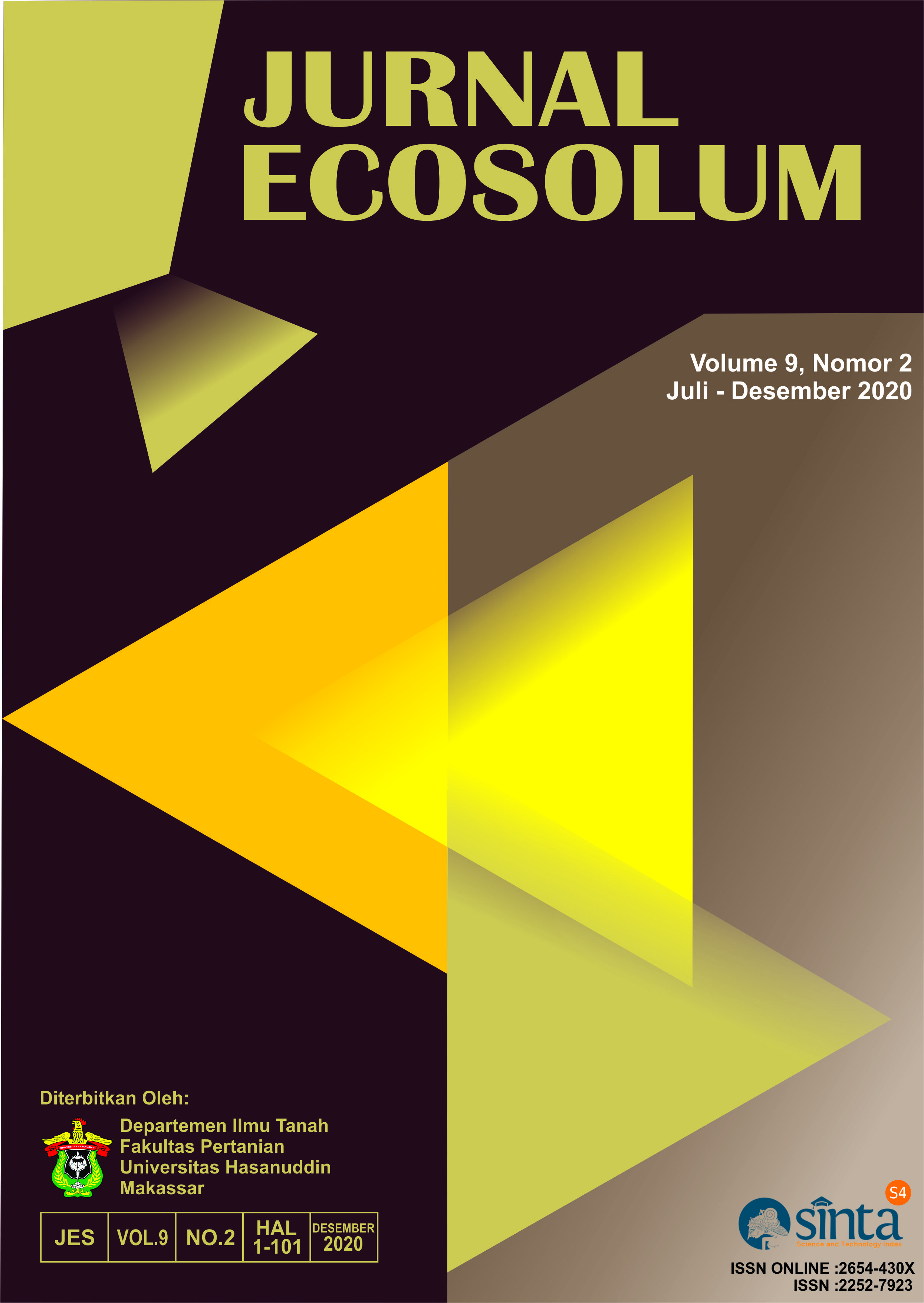Analisis Kesesuaian Lahan Untuk Pengembangan Kopi Robusta dengan Pendekatan Parametrik Terbaru
Land Suitability Analysis for Robusta Coffee Development with The Latest Parametric Approach
DOI:
https://doi.org/10.20956/ecosolum.v9i2.12391Keywords:
Coffee, robusta, parametric approach, bantaeng, Ridha, parametricAbstract
Coffee is one of the mainstay of plantation commodities that has a significant contribution to the Indonesian economy, namely as a source of export foreign exchange, a source of income for farmers, a producer of industrial raw materials and job creation. The high public interest in coffee drinks has made the existence of coffee plants a highly competitive plant, so that land suitability for coffee plants needs to be done. The method used in the coffee land suitability analysis is based on square root and ridha (the latest parametric approach). The results showed that the land suitability class using the square root method was N1 at all observation points of the soil profile. There are limiting factors for soil depth and pH of H2O (profiles 1, 2, 3, 4, 5 and 6) and salinity (profiles 1, 2 and 3) in Robusta coffee, while the land suitability class obtained using the Rabia method is the profile observation point. 2 and 3 are classified into N1 (not suitable at this time) with limiting factors for soil depth, pH H2O and salinity, while at the observation point profiles 1, 4, 5 and 6 on Robusta coffee are classified into S3 (according to marginal) with limiting factors. Soil physical characteristics (soil depth and pH H2O).
Downloads
Published
How to Cite
Issue
Section
License

This work is licensed under a Creative Commons Attribution-NonCommercial 4.0 International License.


